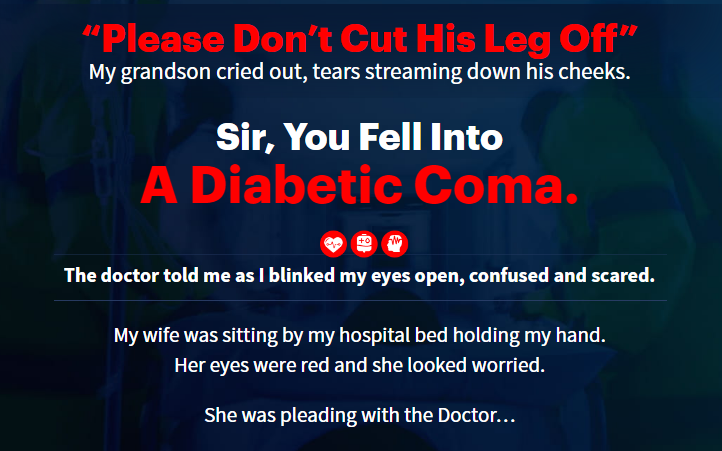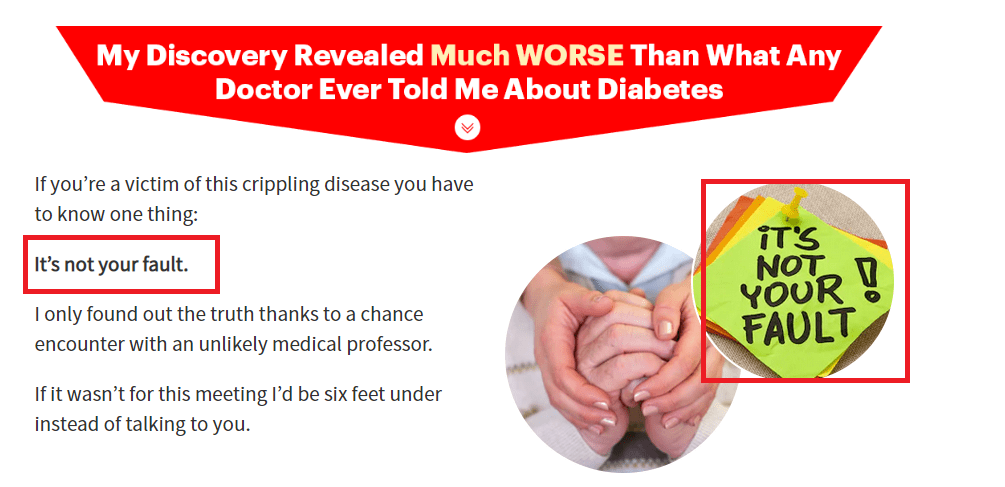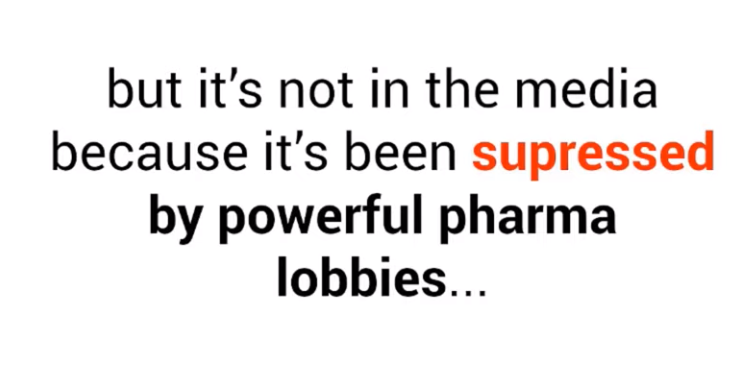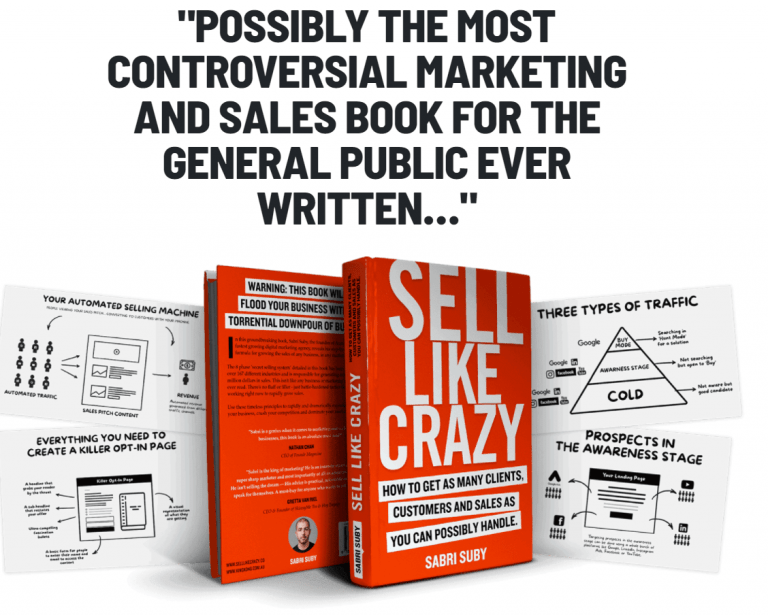Diabetes Freedom Manipulative Sales Tactics Revealed
Diabetes Freedom is among the most sold diabetes programs on the internet.
But why?
As I explain in this post, Diabetes Freedom sells extremely well because of a carefully crafted and highly persuasive sales presentation.
You might have already watched or read this presentation. Maybe you’ve already bought the program after watching that presentation.
In this article, I’m going to review the sales and marketing psychology techniques used by the creator of Diabetes Freedom – George Reilly.
You’re going to discover…
- How they make the video presentation nearly impossible to stop watching – using a powerful technique you already know
- A psychological trick also used in anti-smoking campaigns
- The real reason Reilly attacks big pharma companies
- A psychological ‘hack‘ used to make Reilly appear more trustworthy
What Is Diabetes Freedom?
Diabetes Freedom is a program by George Reilly, which he claims can reverse Type 2 diabetes.
According to Reilly, a doctor called James Freeman developed the program for him. He followed it himself and was able to overcome diabetes within weeks.
The program is based on the theory that a compound called ceramides is the root cause of Type 2 diabetes. He claims his dietary program is able to target the ceramide compound and reverse diabetes.

While there is some research to suggest that ceramides may be associated with diabetes, it’s far from conclusive.
Even if that were to be true, it’s still unknown whether the Diabetes Freedom dietary program effectively targets ceramides.
But the point of this article is not to review the health claims of the program.
Instead, we’re going to review the highly persuasive sales techniques used by Diabetes Freedom.
Is Diabetes Freedom A Scam?
This depends on your definition of a scam.
The sales and marketing tactics used to sell the program are highly persuasive. They could even be labeled as manipulative.
But if the program really does reverse Type 2 diabetes, then does it matter if manipulative tactics are used to sell it?
Unfortunately, it’s difficult to find unbiased reviews on the program to see if it really does work. That’s because most of the reviews you find on Google are written by affiliate marketers.
That means they’re basically commission-based salespeople for the program. When someone reads their review and then buys the program, they get paid.
Many of them haven’t even bought the program.
P.S. I am not an affiliate for Diabetes Freedom. Unlike others writing about the program, I don’t get paid if you buy it.
How Diabetes Freedom Hijacks Your Attention With Storytelling
Story telling is one of the most powerful weapons in a marketers arsenal.
Marketing professionals and copywriters know that stories have the power to capture a reader’s attention like nothing else.
The human brain responds very differently to stories compared to facts and figures. Your brain is hard-wired to pay attention to stories.
But it’s very easy for your brain to tune out in response to facts and figures.
Observe how George Reilly begins the Diabetes Freedom presentation with an engaging story…

Reilly pulls you into the presentation immediately, with this one line – “Please Don’t Cut His Leg Off.”
He has your attention and there’s no escaping.
This opening line also uses a powerful technique known as an open loop.
An open-loop occurs when someone poses a question in your mind. And then leaves it unanswered.
In this case, the viewer will have many questions…
Did they cut off his leg?
Who’s leg?
Why would they cut off his leg?
The loop will remain open until those questions have been answered. And because humans are naturally curious creatures, it will be nearly impossible to tune out, until the loop is closed.
Hollywood movies use this concept to draw people into their stories from the opening scene.
Now he has the viewer’s attention, Reilly engages their emotions:
“My grandson cried out, tears streaming down his cheeks.”
The video presentation even has a photo of a young boy with tears coming from his eyes. This prompts an even greater emotional response from the viewer..

The goal of this story is to put you in an emotional state with your full, undivided attention. Once in this state, you (the viewer) become far more vulnerable to Reilly’s attempts to persuade you.
Reilly continues to use storytelling throughout the presentation to hold your attention and keep you watching (or reading).
Playing With Your Emotions
Emotional marketing campaigns have been proven to be more effective than rational campaigns.
In fact, research has found that emotional-based campaigns perform twice as well as campaigns based on logic alone.
This is partly because people enjoy being in an emotional state. They enjoy it so much, that people will seek out activities that put them into an emotional state.
People watch horror movies to feel fear.
They watch motivational videos to feel inspired.
We listen to songs that makes them feel sadness.
We pursue hobbies that make them happy.
People read news stories that make them angry.
Advertisers use emotions to engage you. They know that if they can elicit a strong emotional response from you, they can draw you in.
The “Thank You, Mom” advertising campaign from Proctor & Gamble is one well known example of this…
Putting you into an emotional state also makes you more vulnerable to sales messages. People are more likely to disregard logical reasons not to buy when they’re in a heightened emotional state.
That means they are more likely to disregard factors like price, quality and performance. These are factors that could potentially be deal-breakers if the consumer is in a purely logical state of mind.
In the Diabetes Freedom video presentation and sales page, Reilly is continually tugging on the viewer’s emotions.

Reilly takes the viewer on an emotional roller coaster – transitioning between a range of emotions. Including sadness, excitement and anger.
By constantly triggering the viewer’s emotions, Reilly is able to keep the viewer engaged throughout his 60+ minute presentation. And also put them into a state in which they are more likely to buy.

This article from Forbes discusses how con-artists trigger emotions in their victims. Potential victims are more likely to make bad decisions in an emotional state (because they forgo logical thinking).
They say this is even more likely to be true among elderly people. It just so happens that a large percentage of the Diabetes Freedom target audience falls into the elderly category.
Emotions can be used to manipulate people into buying things they don’t need. But emotional appeals can also be used to create positive change.
Consider how many people would have at least tried to quit smoking after viewing this anti-smoking ad in Australia..
Emotional appeals have also been effectively in inspiring positive change for other issues. This includes, influencing drivers to follow speed limits and reducing domestic violence.
Why Reilly Takes Aim At Big Pharma
If you’ve seen the Diabetes Freedom video presentation or sales page, you know that he targets pharmaceutical companies.
At times, it feels like Reilly is revealing a conspiracy theory…

There are several psychological reasons he lays this attack on big pharma.
Removes Doubt
Firstly, it answers a big question that viewers are likely to ask. That is… why haven’t I already heard about this?
You see, Diabetes Freedom promotes a rather unconventional solution to diabetes. It’s not medication. And it’s not reducing sugar.
It’s a solution that most people have never heard of.
Which is likely to raise some questions. To counter that, Reilly tells the viewer that big pharma companies are suppressing this information to maintain their profits.
Removes Responsibility
Painting big pharma as the enemy also allows Reilly to remove responsibility from the viewer.
He’s able to tell the viewer that it’s not their fault that they have diabetes. It’s all because big pharma and doctors are conspiring against them and hiding the truth.

Most people don’t want to accept responsibility for their misfortunes. And they don’t want to be told by someone else that they are responsible for the bad situation they’re in.
Telling the viewer that ‘it’s not your fault‘ makes the viewer feel better about themselves.
Doing so also increases positive feelings towards Reilly. He becomes more likeable because he’s telling the audience something that makes them feel good.
And as discussed in Robert Cialdini’s book Influence, people are more likely to be persuaded by someone they like.
Creates Outrage
Pointing the blame at big pharma companies creates a sense of outrage in the viewer.
This is a tactic commonly used in mainstream media and in politics.
People actually enjoy feeling outraged. Psychologist Terri Apter discusses how outrage fuels a sense of moral superiority. As she explains, outrage can be so pleasurable, that people seek out opportunities to trigger it.
The media and marketing professionals know this and take advantage of it.
Right now, as I write this article, the media are fueling outrage among the public in response to the death of George Floyd.

The media knows this is a perfect opportunity to profit off the back of outrage in the public.
They know that a story like this will attract more clicks, get more shares and make them more money.
This tactic also positions Reilly as a trustworthy alternative to big pharma.
People have a natural tendency to support the underdog. Everyone loves stories of the little guy taking on the giant and winning.

When viewing the Diabetes Freedom presentation, viewers will be naturally inclined to side with Reilly because he’s the underdog fighting this ‘injustice.’
Sense of Credibility
People are naturally more likely to trust and believe information coming from credible sources.
Rather than carefully evaluating information, people will use shortcuts to decide whether to accept that information or not.
One of these shortcuts we use is based on the source of the information.
For example, if your friend’s 9 year old son told you that milk causes cancer, you probably wouldn’t believe him.
But if the same information came from a well respected doctor, you would be much more likely to accept it as truth.
This is known in psychology as authority bias.
Marketing professionals routinely use authority bias to their advantage. I explain how Russell Brunson used it to sell $3.2 million dollars in a 90-minute presentation in another article.
But the creator of Diabetes Freedom, George Reilly isn’t exactly an authority on diabetes… He works as a security guard and has no medical background.
So how does he create a sense of credibility?
He simply piggybacks off the credibility of others. If you have watched or read the Diabetes Freedom, you will have noticed how often he mentions universities and medical journals.

Reilly associates himself with authoritative figures or associations so he benefits from their credibility.
He frequently cites research from trusted Universities and journals to trigger authority bias.
To increase the sense of credibility, he introduces a professor called James Freeman. Apparently, it was Freeman who developed the Diabetes Freedom program.

By positioning Diabetes Freedom as the product of this professor, Reilly is able to create a much greater perception of credibility.
Interestingly, if you search on Google for ‘Professor James Freeman’, he doesn’t seem to exist. Despite Reilly’s claim that Freeman had received awards for his diabetes research.
Reilly also adds perceived credibility to Diabetes Freedom by associating the program with Japan.
Most people will associate Japan with good health. People know that the Japanese have the longest life expectancy in the world.
Reilly leverages this association to add credibility to Diabetes Freedom and the claims he makes.
Selling Simplicity
Humans are drawn to ease and simplicity.
In my article on marketing psychology, I explain in detail the biological reasons for this.
Reilly knows that the easier he can make his solution sound, the more appealing it will be to his audience.
To do this, Reilly uses certain words that people associate with ease and simplicity. I’ve highlighted them below..

The word ‘formula‘ is commonly used in sales copy and marketing presentations.
This word instantly triggers associations with ease. People subconsciously think “all I’ll need to do is X and Y to get XY result.”
Everyone wants the formula. Because it means somebody else has already figured it out.
Reilly continues to reiterate just how simple the program is. In fact, he uses the word ‘simple’ 10 times throughout the presentation. And the word ‘easy’ a total of 8 times.

Other words that Reilly uses to create a perception of simplicity include, shortcut, hack and trick.
Those suffering from diabetes are used to being told that they need to do difficult things to reverse or help their symptoms.
Their doctor might have told them to stop eating the foods they enjoy most, exercise regularly or take expensive medications.
Words like ‘hack’ and ‘trick’ give the viewer hope that there is an easier and better alternative. The viewer subconsciously wants this to be true. So they accept what Reilly is saying.
Repetition
Following on from the last point, Reilly continues to hammer in just how easy it is throughout the video.
This is a way to leverage the illusory truth effect. This psychological principle says that the more we hear something, the more we accept it as truth.
The first time someone hears that his diabetes solution is very simple and easy, they may be sceptical. That claim will be processed in the subconscious mind, which may dismiss it.
But as Reilly keeps repeating the claim that it’s easy, it becomes more accepted as truth. The conscious mind spends less energy evaluating the validity of the claim. And it can pass through to the subconscious mind.
Summary
The video presentation for Diabetes Freedom is carefully designed to be highly persuasive.
Every paragraph and every sentence is carefully crafted to influence the viewer to buy the program. If you’re considering purchasing the Diabetes Freedom program, you should be aware these psychological tactics are being used to persuade you.
Even if you don’t intend to buy the program, there is a lot to learn from the sales presentation.
The tactics I’ve described in this post can potentially be used to abuse people’s vulnerabilities. Good marketers can sell bad products using these techniques.
But they can also be used for good.
Creating a sense of authority can help influence people to buy products that genuinely help them.
Governments can use emotional appeals to influence people to change their behavior in positive ways. For example, this and other tactics could help persuade people not to drink-drive.
To learn more about how persuasion and influence is used in marketing, check out some of my other posts…
Russell Brunson $3.2 Million Sales Presentation Analysis








Hi Richard, I really appreciated your article; & I feel you nailed it about George Reilly’s video! I’ve been informally studying marketing for years, but I feel your summary of this video, gives you good credibility! I watched it 5days ago & did feel it was just too slick! So I typed professor Freeman into my phone just now, & did the unusual for me; scrolled down & found your article, thanks. From all my market researching study I fully agree with your appraisal of the YouTube rabbit hole I went down from viewing the full video. But however I still felt skeptical, so for once I did hesitate to jump in! Apparently in America lots of people readily by products or services this way & even Upsells too! So do you have any straight/normal information about your services? (No negative vibes intended) I will use a professional with ethics one day myself; so please forward any offers you have to me, thanks John Stephenson